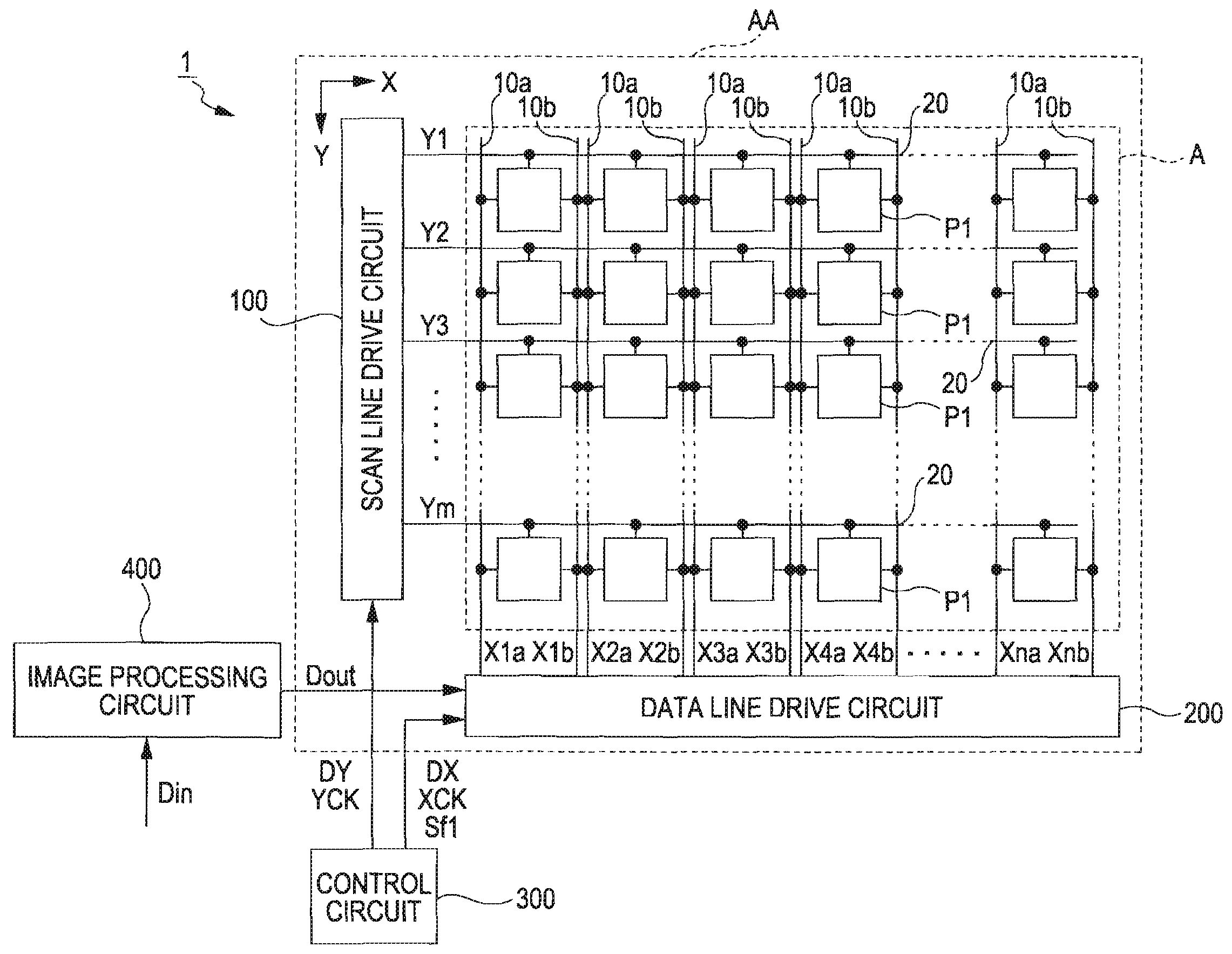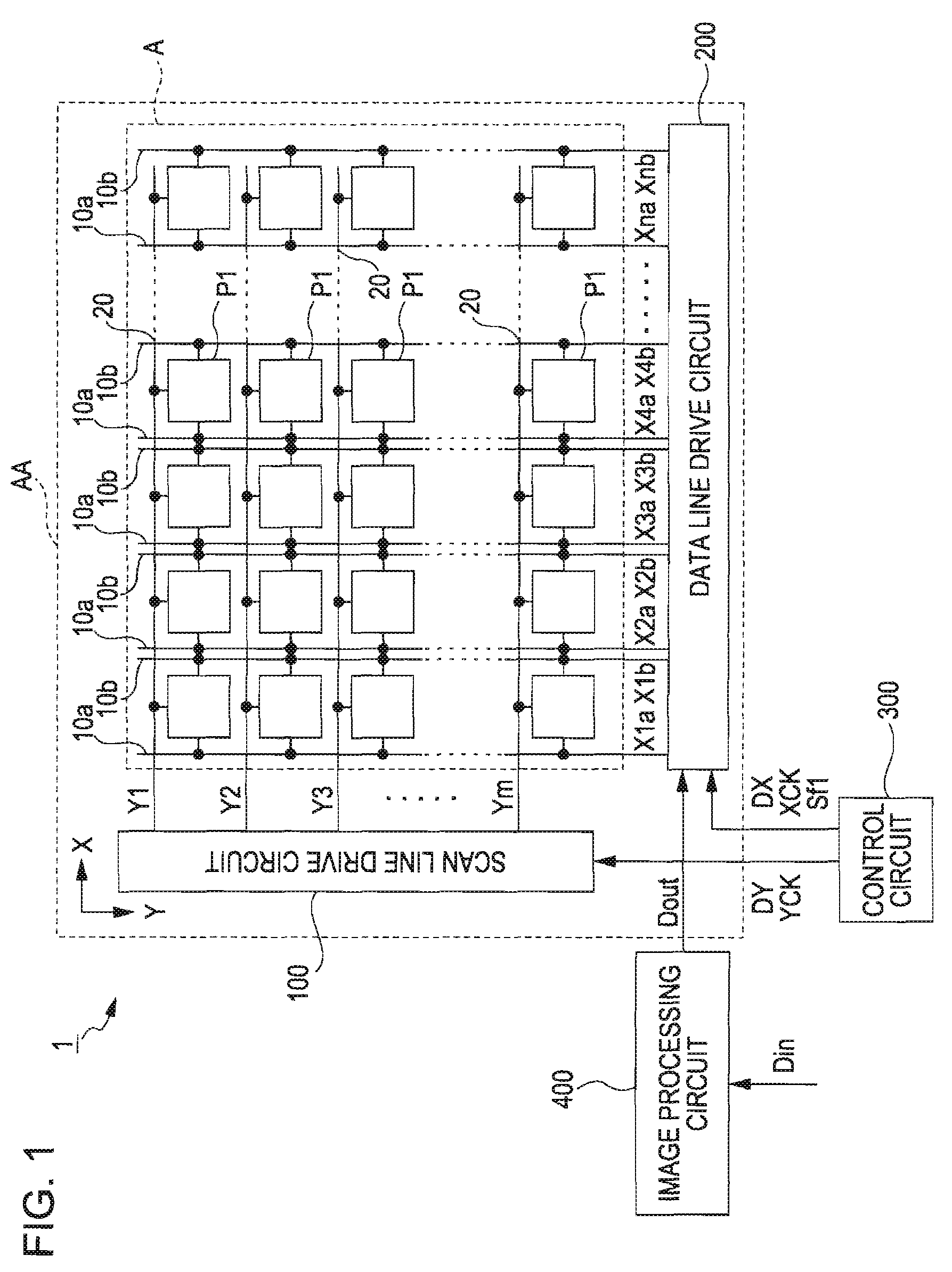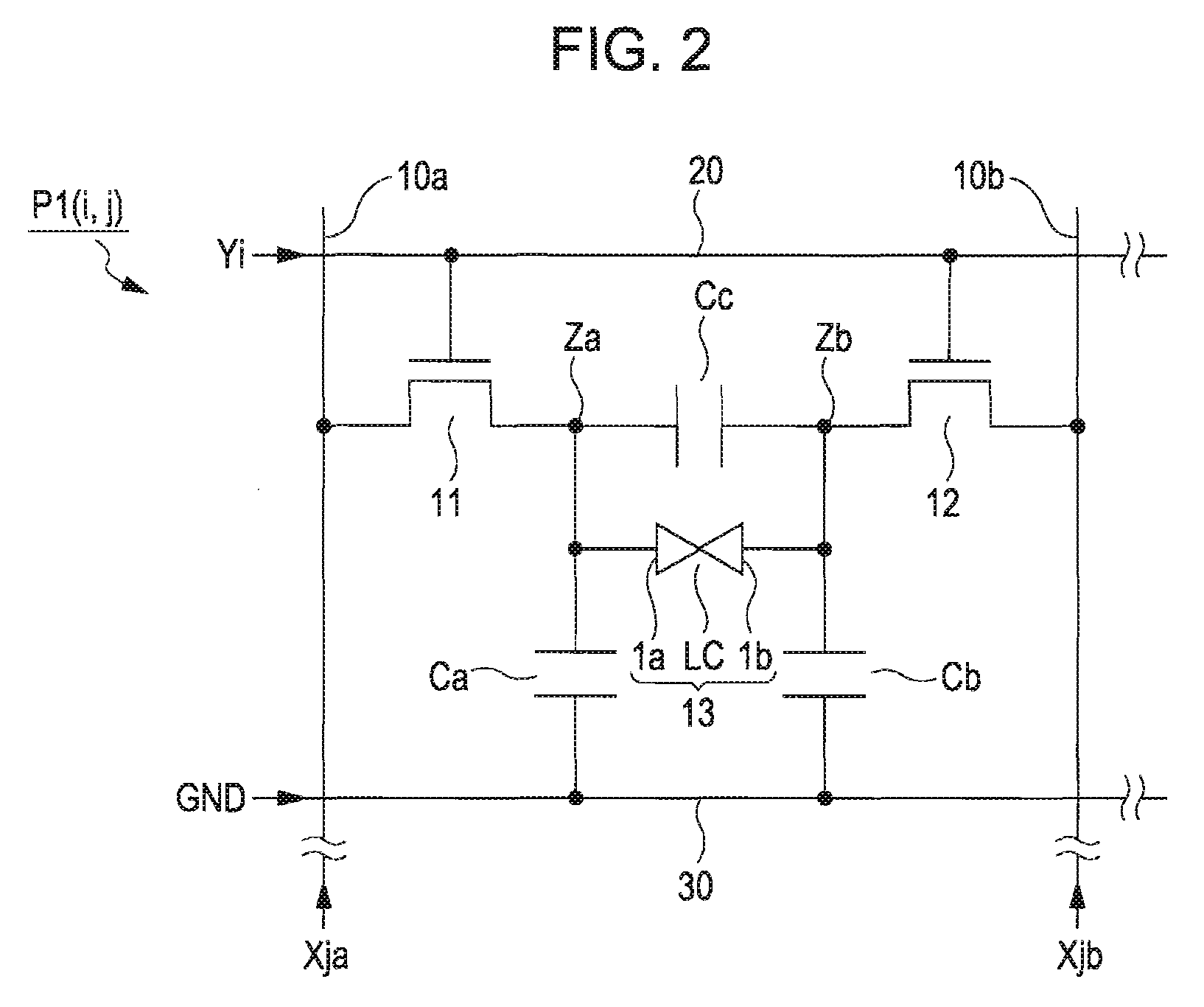Method of driving electro-optical element, pixel circuit, electro-optical device, and electronic apparatus
a technology of electrooptical elements and electrooptical devices, applied in the direction of instruments, computing, electric digital data processing, etc., can solve problems such as burn-in and image quality deterioration
- Summary
- Abstract
- Description
- Claims
- Application Information
AI Technical Summary
Benefits of technology
Problems solved by technology
Method used
Image
Examples
first embodiment
1. First Embodiment
[0048]An electro-optical device according to a first embodiment of the invention uses liquid crystal as an electro-optical material. The electro-optical device 1 has a liquid crystal panel AA (an example of an electro-optical panel) as a main portion. The liquid crystal panel AA is formed by adhering the electrode forming surfaces of a device substrate, on which thin-film transistors (hereinafter, referred to as “TFTs”) are formed as switching elements, and a counter substrate together with a predetermined gap therebetween so that they face each other and inserting liquid crystal into this gap.
[0049]FIG. 1 is a block diagram showing the entire configuration of the electro-optical device 1 according to the first embodiment of the invention. The electro-optical device 1 includes the liquid crystal panel AA, a control circuit 300, and an image processing circuit 400. The liquid crystal display AA is of a transmissive type, but may be of a semi-transmissive type or a ...
second embodiment
2. Second Embodiment
[0088]Next, an electro-optical device according to a second embodiment is equal to the electro-optical device according to the first embodiment shown in FIG. 1, except for the detailed configuration of the image display region A and the detailed configurations of the scan line drive circuit and the data line drive circuit.
[0089]FIG. 9 shows the configuration of the image display region A in the electro-optical device according to the second embodiment. As shown, in the image display region A, pixel circuits P2 arranged in m rows and n columns are formed. In this embodiment, a set of a first scan line 20a and a second scan line 20b is arranged in each row, and n+1 data lines 10ab are arranged in a column direction. First scan signals Y1a to Yma are supplied to m first scan lines 20a and second scan signals Y1b to Ymb are supplied to m second scan lines 20b.
[0090]FIG. 10 is a circuit diagram of a pixel circuit P2(i, j) of the ith row and jth column and a pixel cir...
third embodiment
3. Third Embodiment
[0097]Next, an electro-optical device according to a third embodiment is equal to the electro-optical device according to the first embodiment shown in FIG. 1, except for the detailed configuration of the image display region A and the detailed configurations of the scan line drive circuit and the data line drive circuit.
[0098]FIG. 15 shows the configuration of the image display region A in the electro-optical device according to the third embodiment. As shown, in the image display region A, pixel circuits P3 arranged in m rows and n columns are formed. In this embodiment, a set of a first scan line 20n and a second scan line 20p is arranged in each row, and n first data lines 10a and n second data lines 10b are arranged in a column direction. First scan signals Y1n to Ymn are supplied to m first scan lines 20n and second scan signals Y1p to Ymp are supplied to m second scan lines 20p. In addition, first voltages X1a to Xna are supplied to the n first data lines 1...
PUM
 Login to View More
Login to View More Abstract
Description
Claims
Application Information
 Login to View More
Login to View More - R&D
- Intellectual Property
- Life Sciences
- Materials
- Tech Scout
- Unparalleled Data Quality
- Higher Quality Content
- 60% Fewer Hallucinations
Browse by: Latest US Patents, China's latest patents, Technical Efficacy Thesaurus, Application Domain, Technology Topic, Popular Technical Reports.
© 2025 PatSnap. All rights reserved.Legal|Privacy policy|Modern Slavery Act Transparency Statement|Sitemap|About US| Contact US: help@patsnap.com



